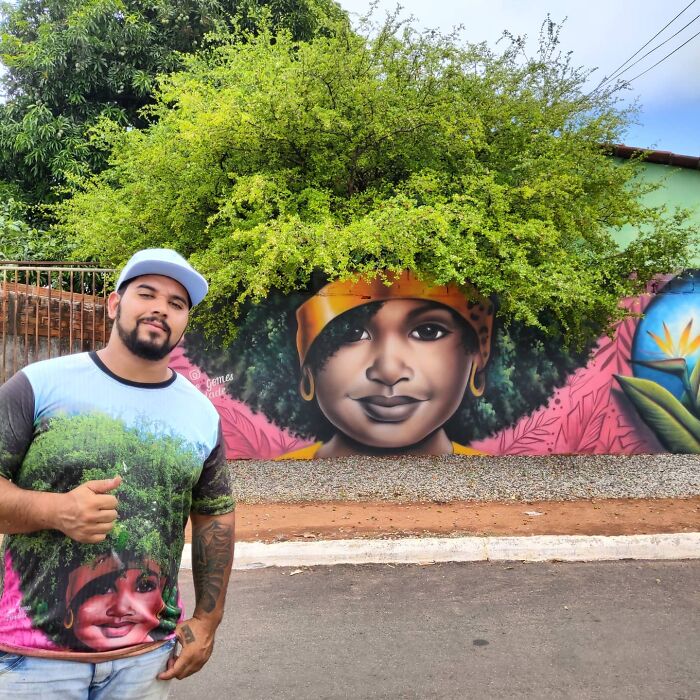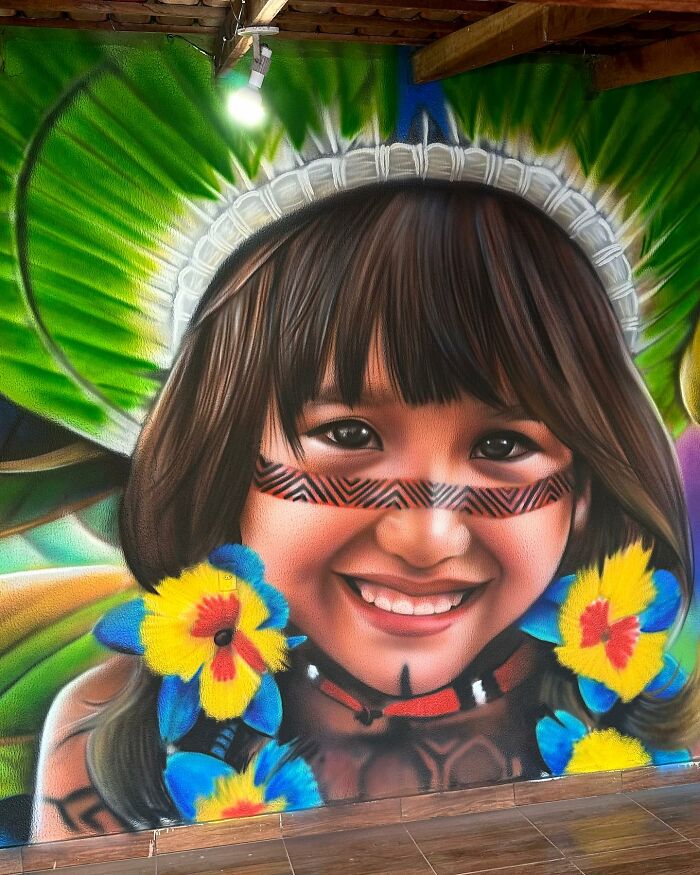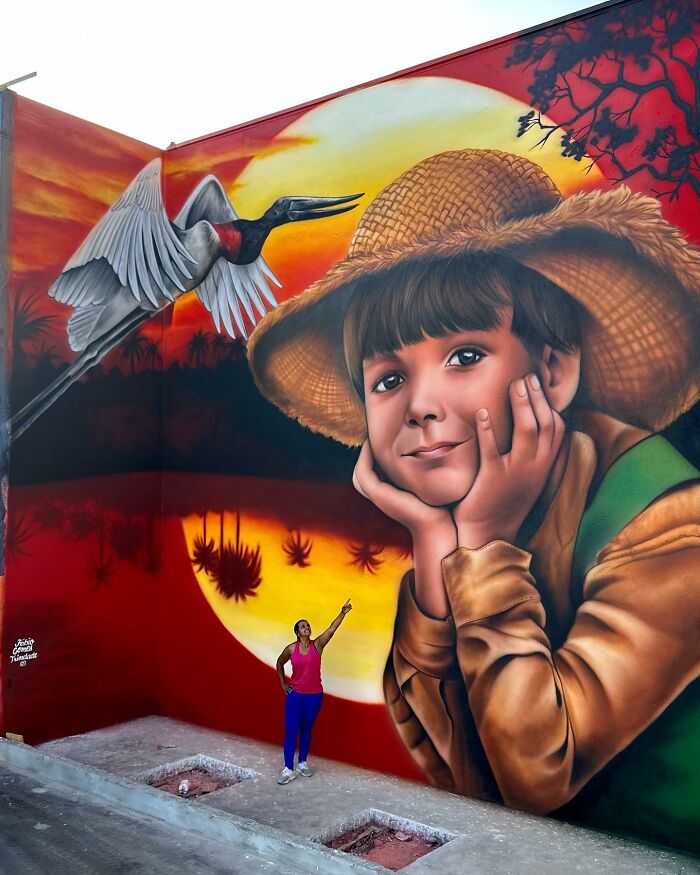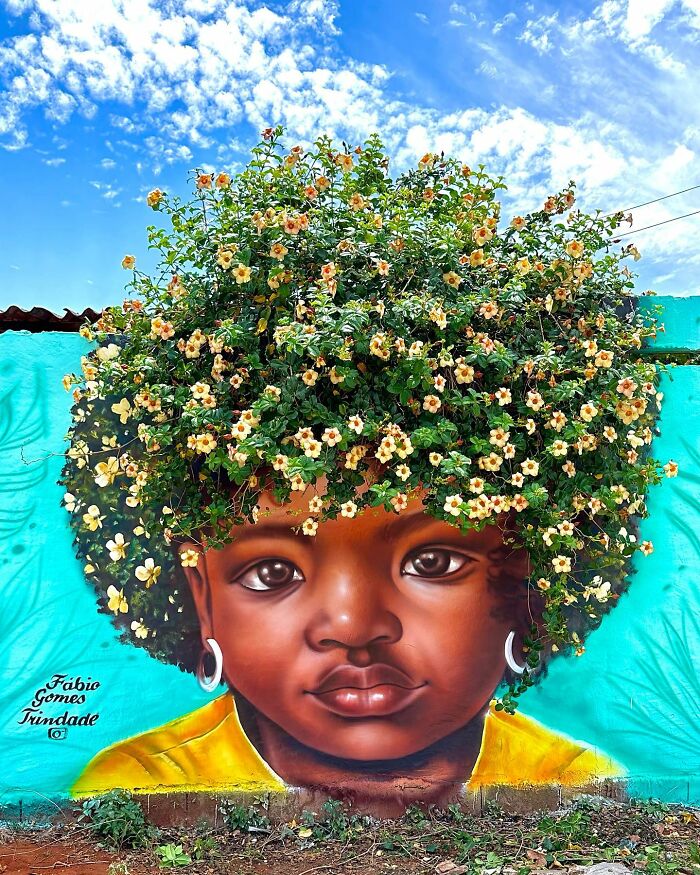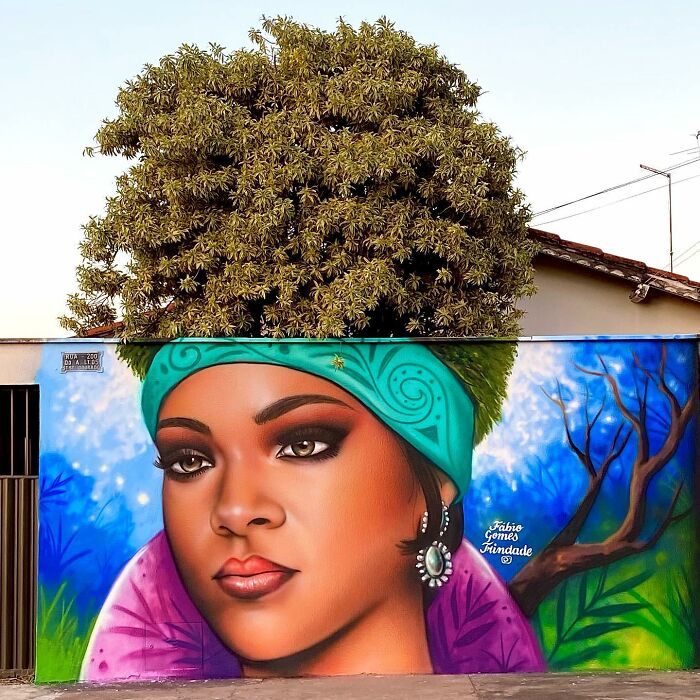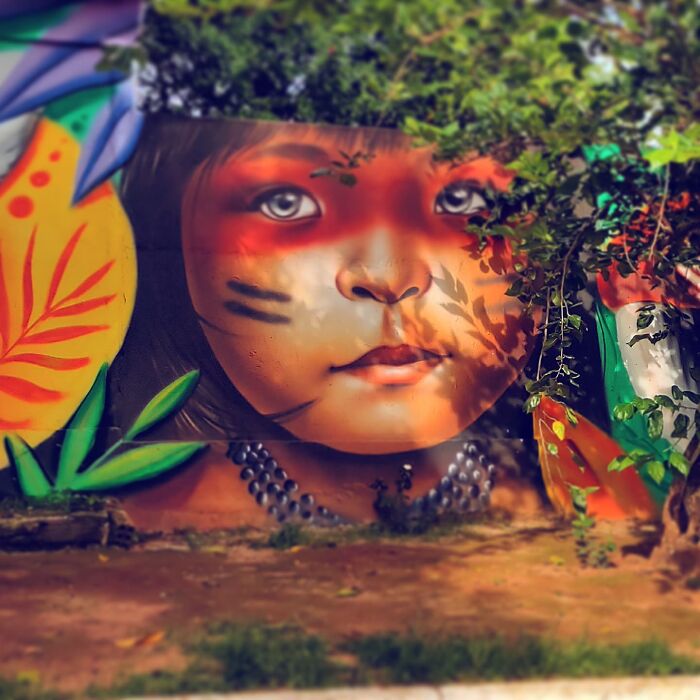Brazilian artist Fábio Gomes Trindade masterfully melds the realms of urban landscapes and natural elements in his striking murals. Contrary to the popular notion that urban and natural settings are mutually exclusive, Trindade brings these two worlds together in a harmonious blend. By integrating trees and foliage as continuations of the human hair in his portraits, Trindade effectively dissolves the boundaries between the natural and urban spheres.

The Natural ‘Hairstyles’ in Trindade’s Murals
Selecting the optimal locations for his murals, Trindade often paints underneath trees or flowering plants. This strategic placement allows the leaves, flowers, and branches to act as extensions of the subjects’ hair, generating an illusion that they are intrinsically part of his art. In a statement on social media, Trindade revealed that his inspiration struck upon observing an acerola tree, aged 20 years, in the backyard of a simple home. That tree now contributes to one of his most celebrated works.
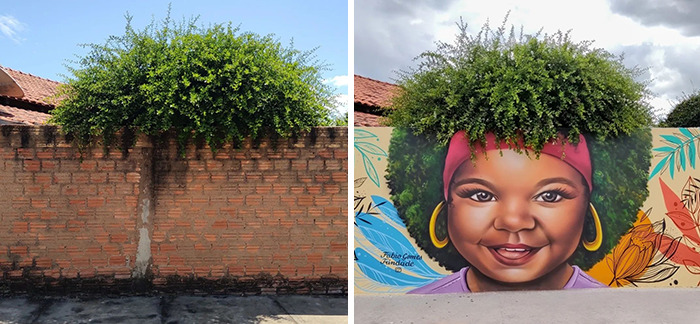
Artistic Recognition: A Viral Phenomenon
Trindade’s groundbreaking approach to incorporating natural elements into his portraits of women and children has earned him significant acclaim. His art rapidly gained popularity in Brazil and has begun to garner international attention. Esteemed figures, including Oscar-winning actress Viola Davis and Beyoncé’s mother, Tina Knowles, have shared their admiration for his work on social platforms.

A Symphony of Elements: Completing the Artistic Puzzle
What makes Trindade’s artwork so compelling is the unity between painting and nature, which produces an intricate yet complete portrait. Branches and flowering vines that are situated above his vivid murals contribute the finishing touches, making each artwork an integrated whole. The amalgamation of urban and natural elements, therefore, is not just a stylistic choice but a complete representation of the subject.
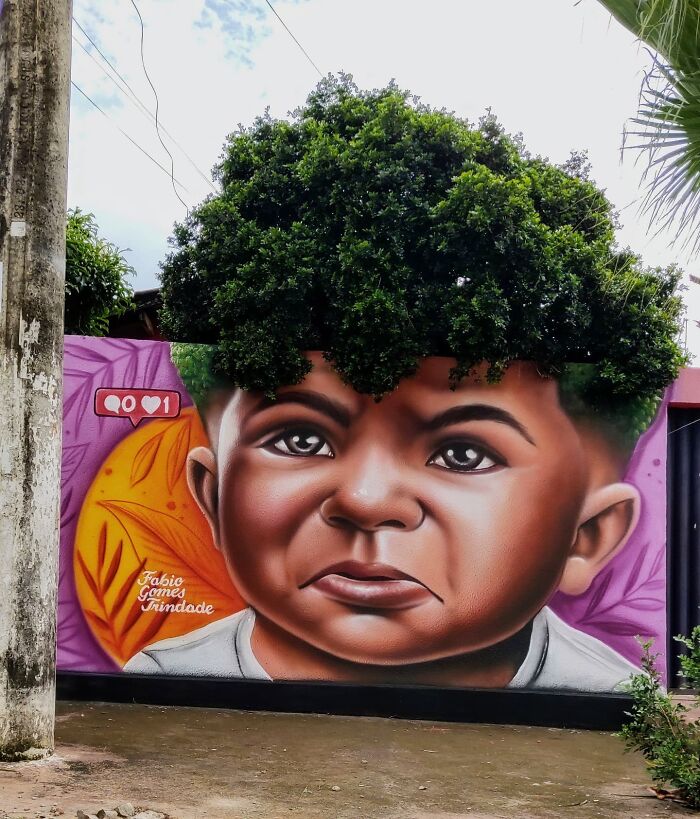
A Look at Recent Works
Two recent additions to Trindade’s portfolio are inspired by a child model, Egypt Sarai. The artist portrayed the young girl in dual perspectives: one features an afro made up of pink blossoms, and the other shows her hair partitioned into two distinct puffballs. Both paintings emphasize Sarai’s delicate facial features, enhanced further by the natural elements.
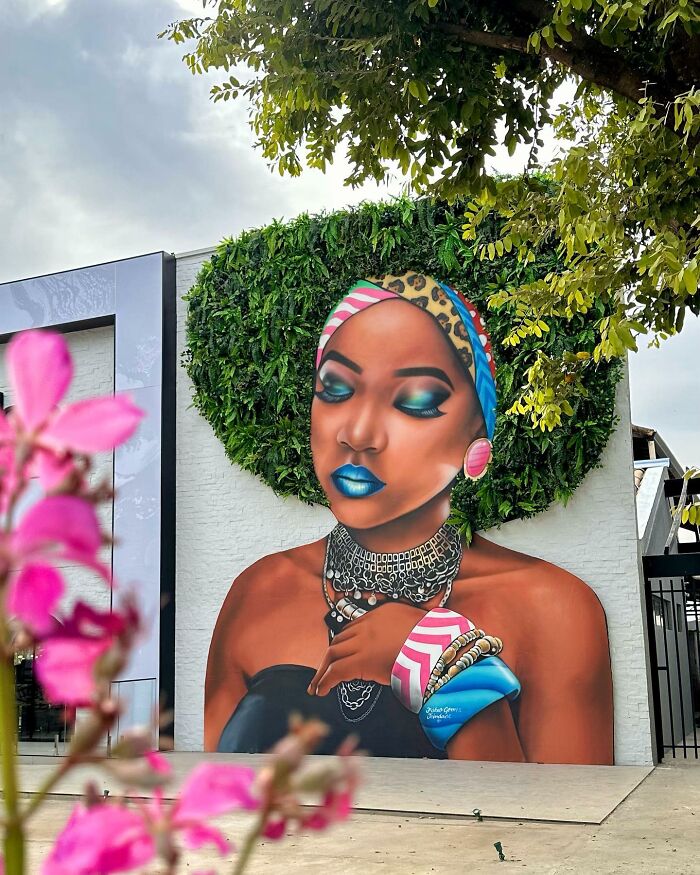
Additional Information about Fábio Gomes Trindade
Given the growing global interest in Trindade’s work, it may be relevant to mention that he is from Brazil, a country situated in South America. Brazil has a diverse cultural tapestry influenced by native Brazilian traditions, as well as African, European, and Latin American influences. The official language is Portuguese, and the currency is the Brazilian Real. The country’s GDP as of 2021 was approximately $1.44 trillion. Located at latitudes 5.27° S, longitudes 60.21° W, Brazil’s climate ranges from tropical to subtropical, accommodating diverse ecosystems like the Amazon Rainforest. The primary religion is Christianity.
| Continent | Official Language | Currency | Population | GDP | Climate | Major Religions |
|---|---|---|---|---|---|---|
| South America | Portuguese | Brazilian Real | 213 million | $1.44 trillion | Tropical, subtropical | Christianity |
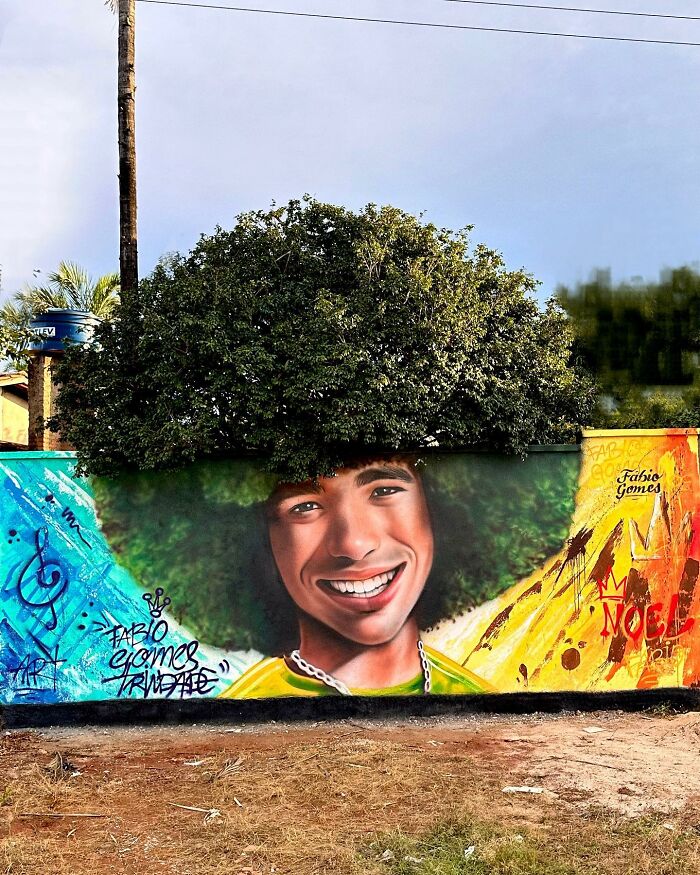
A Platform for Sharing: Social Media Impact
The widespread acknowledgment of Trindade’s art is also a testament to the power of social media in amplifying voices from different parts of the world. Fábio Gomes Trindade’s ingenious blend of urban and natural elements in his murals not only defies the conventional boundaries between these two worlds but also invites us to reconsider how we perceive them. His work is a vivid illustration of how artistic imagination can be the bridge between seemingly disparate elements, resulting in creations that are both impactful and harmonious.
By merging urban life and nature in his murals, Trindade invites us to look beyond conventional wisdom and appreciate the symbiotic relationship between the two. His art serves as an exemplar of how creativity can transcend traditional boundaries, offering a fresh perspective on the harmonious integration of natural and built environments.
